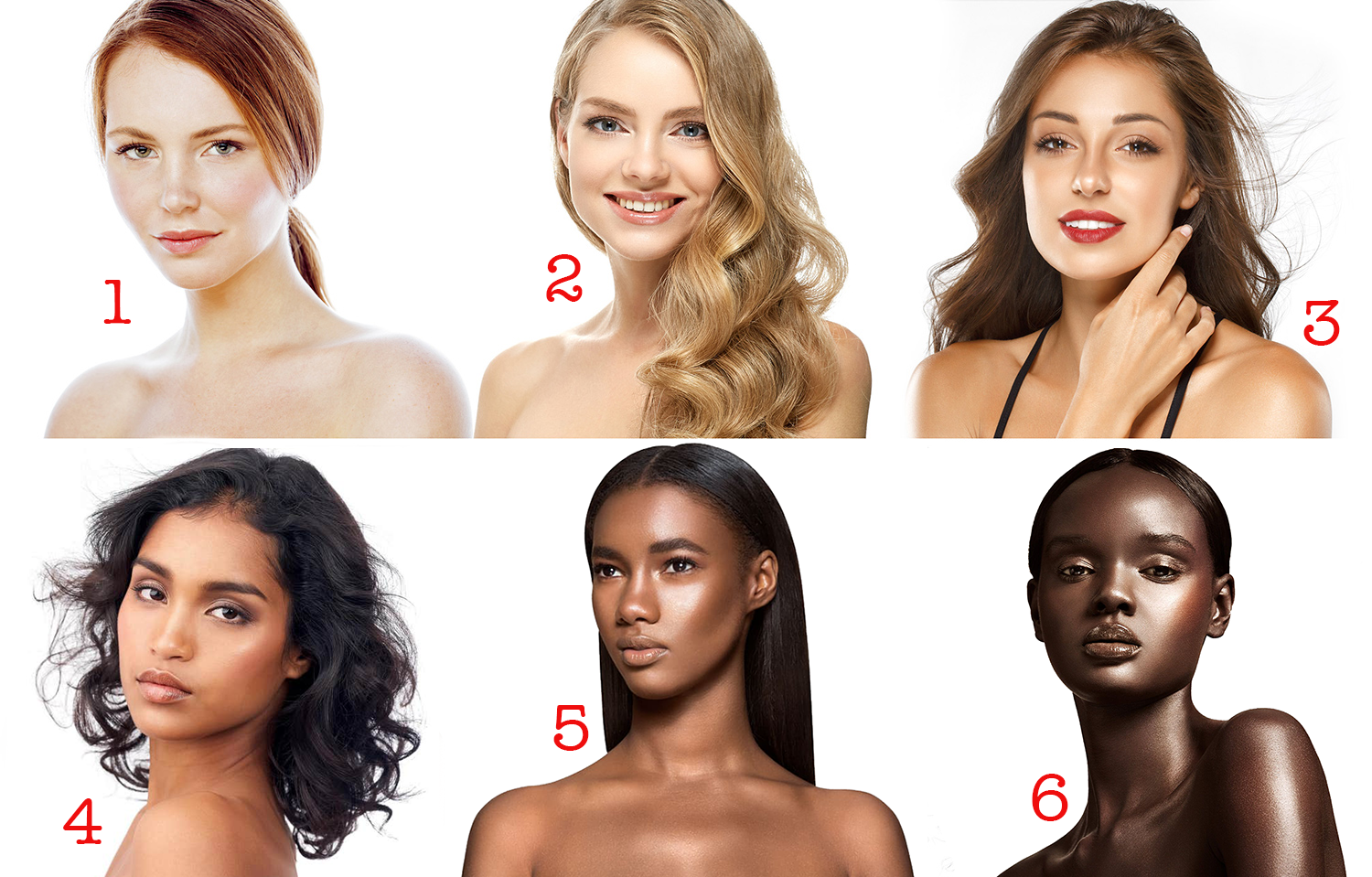
a) What is the Fitzpatrick skin typing scale?
Throughout this website, you'll see specific skin types referred to by number. The system used is called the Fitzpatrick skin typing scale. It's a common system used to help predict the skin's response to specific aesthetic treatments.
The Fitzpatrick scale is a numeric scale from 1 to 6 that classifies skin type on characteristics and responsiveness to ultraviolet light in respect of how long it takes to tan or the likelihood of sunburn.
It's a particularly beneficial guide in relation to a skin's post-inflammatory reaction, susceptibility to skin cancers and hypertrophic scarring.

b) How does my skin type affect my aesthetic treatment options?
Melanin absorbs energy. Black and many ethnic minority skin types are at greater risk of skin damage during light-based treatments. Long-pulsed lasers work deeper with the skin causing less potential damage to the surface. Short-pulsed laser works much closer to the surface of the skin and therefore, more risk of absorption and skin damage.
IPL devices are unable to differentiate melanin in the skin and melanin in the hair. IPL hair removal can target the destruction of hair follicles but if it can't tell the difference between your hair and skin, it will damage both. IPL is completely unsafe in skin type 6. Skin types 4-5 can be treated with much lower energy levels than that of skin types 1,2 and 3 therefore treatment outcomes are likely to be poor.
Skin types 4-6 are prone to hyperpigmentation. This is recognised as dark marks or patches on the skin. It typically occurs after irritation or injury. During the skins healing process, excess melanin can build up at the source. Post-inflammatory hyperpigmentation is the correct term given to new occurrence i.e after a spot has healed. A dark mark may persist long after. Where a light mark or patch exists, melanin has been damaged and led to pigment loss. This is called hypopigmentation, which may or may not be permanent.
Post-inflammatory hyperpigmentation can also be caused by aggressive skincare products or beauty treatments. Specific types of chemical peels or laser resurfacing devices can become harmful to dark/deep skin. The most successful treatment approach is progressive where results are achieved over time. An agressive approach is far more likely to result in skin damage which may or may not be reversible.
Skin types 1-3 do not readily absorb energy and therefore laser and IPL options are much greater and can be more successful. IPL can work particularly well in this group. IPL can operate long and short-pulsed at the same time where long can destroy hair follicles and short will work to improve lines and pigmentation.
Skin types 1-3 tend not to suffer hyperpigmentation. The skin heals well and although a progressive approach is recommended for all skin, fair to light skin is expected to recover from aggressive agents such as medium/deep chemicals peels without complication. This skin is also eligible for medical-grade ablative treatments that are typically not recommended to skin types 4-6.
All skin is different, these are general guides. Within aesthetics characteristics and causes of concern can differ between fair/light skin to that of dark/deep skin. Skin types 4-6 are reactive in a cautious way and can often require a different treatment approach.
It's important when choosing a practitioner they are confident in treating all skin types. The right agents and devices must not only be matched to the skin condition but to the skin type.

